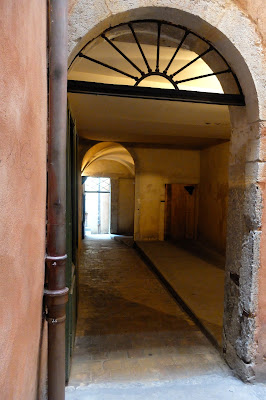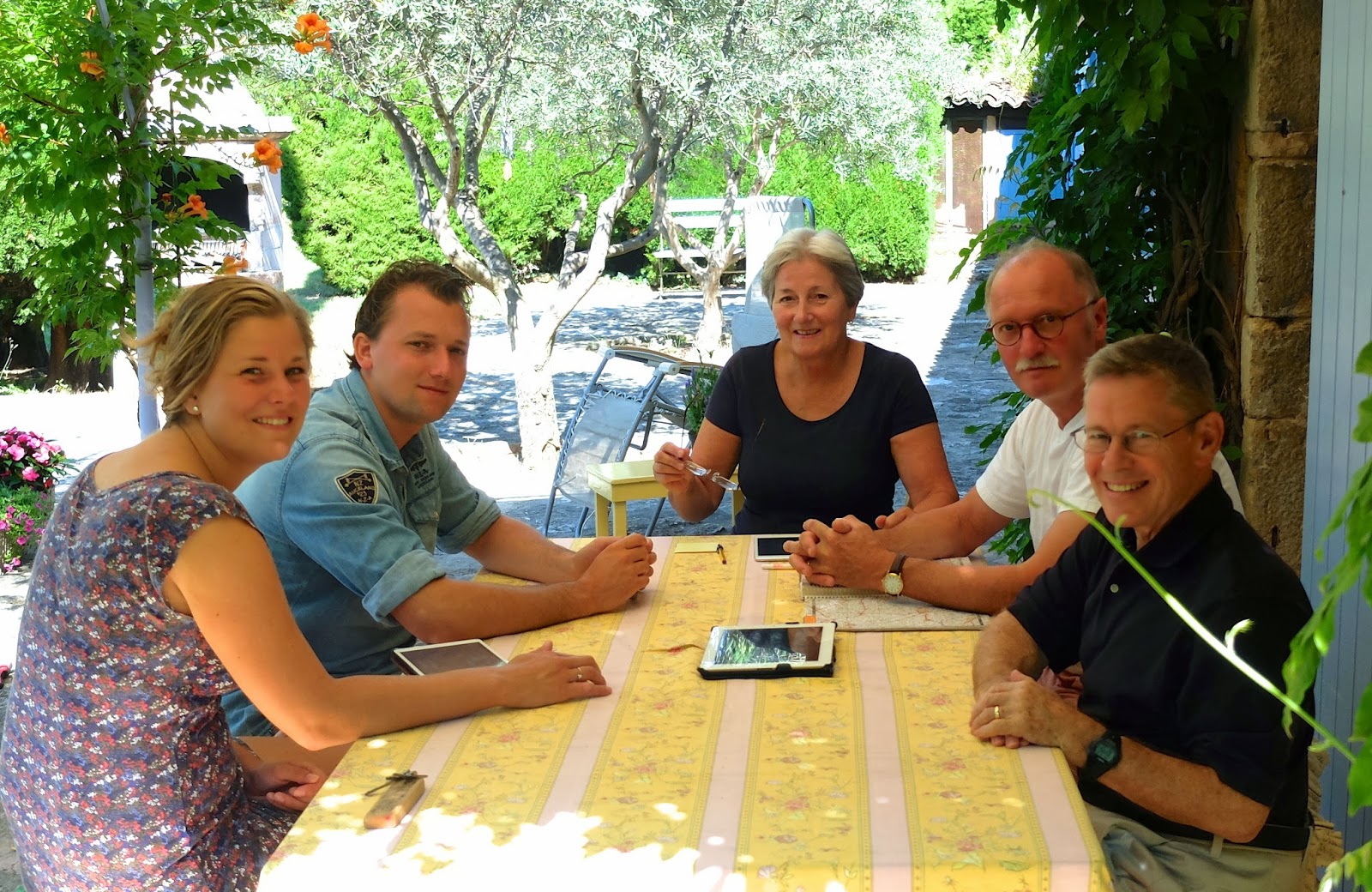We’ve just returned from a three-day getaway to the south of
France, where we visited friends near the Mediterranean city of Nice. The trip was all the more fun for having been
arranged almost spontaneously.
In the summer of 1980, just two months after our wedding,
Becky and I hosted Taco and Nancy, a young Dutch couple whom my father met in
the Netherlands. Taco and Nancy (T/N)
were making their first visit to the United States, traveling on two school
teachers’ salaries. Dad – a networker
before the word was invented – arranged for T/N to spend a few days with us in
our apartment 29 stories above New York City.
We had a wonderful time together, and we’ve exchanged newsy Christmas
letters for 33 years, “watching” children grow and careers develop.
As Becky and I planned our September travel itinerary, we
gave thought to a detour up to Holland to see T/N at their home in The
Hague. An email to Nancy brought an
immediate response, but with a twist: They were vacationing at relatives’ house
not far from the Riviera, and they wondered if we could join them? Mais
oui!
Last Wednesday we took a train to the small seaside city of
Frejus, where T/N were waiting on the platform.
Becky and I weren’t sure we’d even recognize them after more than three
decades, but as soon as we spotted each other, the years dropped away. We were the same people with just a few more
gray hairs.
T/N drove us about 30 minutes north to Fayence, a village
that, like so many towns in Provence, has occupied a hilltop for
centuries. Five kilometers outside the
town we drove up a gravel drive to the house, which is owned by Taco’s sister
and brother-in-law, but is used by many members of the extended family.
The large, rambling house, stucco and stone with “Provence
blue” shutters, is a century-old farmhouse that has been expanded and improved
over the years. Taco’s sister has, among
other things, added a swimming pool and a large patio with a fountain. The property includes more than 80 olive
trees (the olives are still hard green berries now), which a neighbor harvests
each fall, sharing the proceeds with the owners.
We had three days of fellowship and fun. On Thursday evening, T/N’s son, Lars, arrived
with his lovely partner, Nynke Anna, for a week of home cookin’ after a camping trip
with friends in Normandy and before heading back to their jobs in the
Netherlands. The young couple are most
engaging, and Becky and I were impressed with the ease with which they shifted
into fluent English to visit with us.
Some highlights of the visit, before we caught a
late-afternoon train back to Lyon on Friday:
Walking around charming Fayence, with its shops and cafes
bordering narrow streets and courtyards and flowers in every window box, and
watching gliders soar on the wind currents overhead.
En route to Nice, stopping in the city of Grasse to visit
one of the five perfume manufacturers headquartered there, and getting an
interesting guided tour of the complex process by which scents are bottled.
Walking around Nice for an afternoon, seeing its bustling streets and beaches, and viewing its harbor from a high promontory.
Visiting a large regional antiques market that Fayence hosts
for two weeks each summer, and using the French phrase for, “Just looking.”
Eating two delicious dinners prepared by Taco, the family
chef.
Pulling into the Lyon train station Friday night and,
surprisingly, having a slight sense of coming “home.”





















































